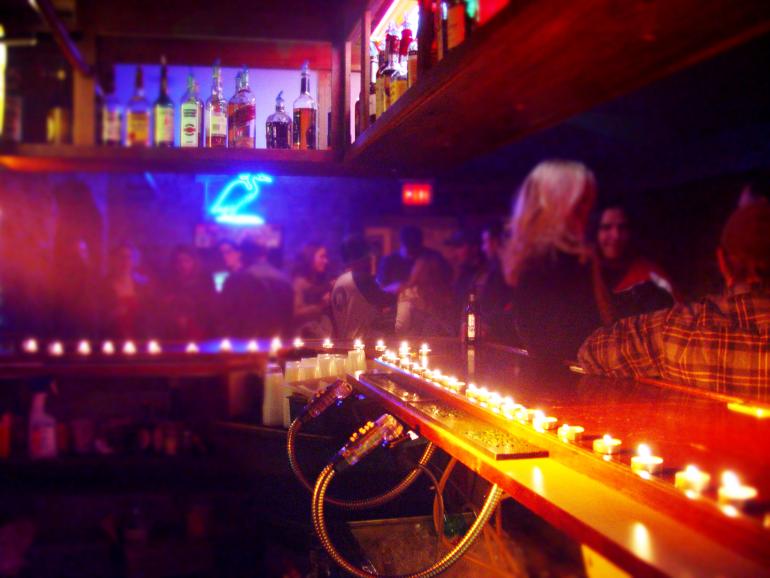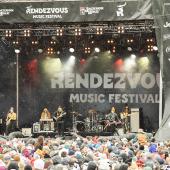Bozeman's Music Scene
Where to listen to live tunes around town.
Take your pick: bluegrass, acoustic, “jam” band, reggae, hip-hop, country, punk, classic rock, symphony, or bluesy jazz. This may sound a little like the famously eclectic Seattle music scene—but in fact, all these genres are offered right here within the surprisingly progressive music scene of the Gallatin Valley.
On an average Friday night, you could begin the evening at the Robin taking in some mellow bluegrass. After a few drinks, cruise down Main Street and pop into the Leaf and Bean for an intimate acoustic show. Or keep walking down to the Rockin’ R Bar to hear some contemporary “jam” band music. If that’s not your flavor, hop across the street to the Eagles and practice your two-step while dancing to some good ol’ country. Then finish the Main Street music scene at the Zebra Cocktail Lounge where a wide variety of music can be heard—most notably, reggae, funk, and hip-hop.
This is just Main Street—other areas of town also contribute to Bozeman’s vibrant music scene. To name a few, the Bay features funky, soulful blues; the Belgrade Lounge is a country-western hotspot; and the Filling Station hosts everything from hard rock to honkytonk. Wherever you go, Bozeman’s budding music scene offers a diverse array of options for fans of live music.
Like everything else around here (including the snowpack), the music scene in Bozeman is always changing. Underground hip-hop has become a staple, replacing the once-constant presence of “jam” band music. This shift in popularity has a direct correlation to the new creative vibe prevalent among many Bozemanites. Mike “Bueno” Good, the owner of Cactus Records and a reasonably new citizen of Bozeman, embodies this new, enthusiastic passion for eclectic musical tastes. “A lot of creative people exist for a town this size,” Bueno explains, “who are more apt to explore lesser-known genres of music and artists. In turn, we’re getting a lot more acts that we never would have before on a national level, because of more bedroom promoters and a budding art scene.” This excitement for music can be seen at places like the Willson with a revamped symphony, the small-town-Montana-style bar at the Filling Station, the cozy auditorium atmosphere of the Emerson, the ballroom setting at the Gallatin Gateway Inn, and the classic country-western feel of the Belgrade Lounge.
One of the many reasons the music scene appears to be progressing lies in the improvement and acceptance of local talent. Johnny Steel and the Decline of the West, Side Project, and Bumpkin are three local bands making strong names for themselves in the local and regional musical community. One possible reason for this enhancement of local talent exists in the many venues offering open-mic nights for all kinds of music. Newcomers can try out their talent and tunes on Monday night at the Haufbrau, Wednesday night at the Co-Op, and Sunday at the Robin. The rapid interest in open-mic nights has motivated the Zebra and Leaf and Bean to follow suit. Although open-mic nights do not guarantee a future in the music business, they nevertheless provide an opportunity for aspirants to get heard, and often serve as a gateway to bigger and better musical venues.
As a university town with considerable youthful enthusiasm, Bozeman still does not offer an all-ages club where minors can listen to music into the wee hours. Hence, the music scene is somewhat hindered. According to Luke Flansburg of the funk, rock, fusion-jazz band Bumpkin, “Music in Bozeman could definitely be improved with the arrival of an all-ages club. College students and other area youths have come to rely on the Zebra night after night, but underage kids have limited options for live music.” Hopefully, the demand for an all-ages venue will eventually be heard and provide an outlet for the creative musical energy that a younger audience can provide.
Although Bozeman does not attract a significant number of popular, major artists, the valley is slowly gaining recognition as a town that appreciates a variety of good music. One thing helping this cause is geography: Bozeman lies on the I-90 corridor between Spokane and Minneapolis, and is connected by relative proximity and good highways to Salt Lake City, Boise, even Denver.
“Bozeman is too small of a town to focus on just one genre of music,” Bueno reminds us. It is this awareness and passion that will continue to broaden Bozeman’s progressive musical trend and diverse focus.
Note: this article was published in the summer of 2005; much of the information may be outdated.













